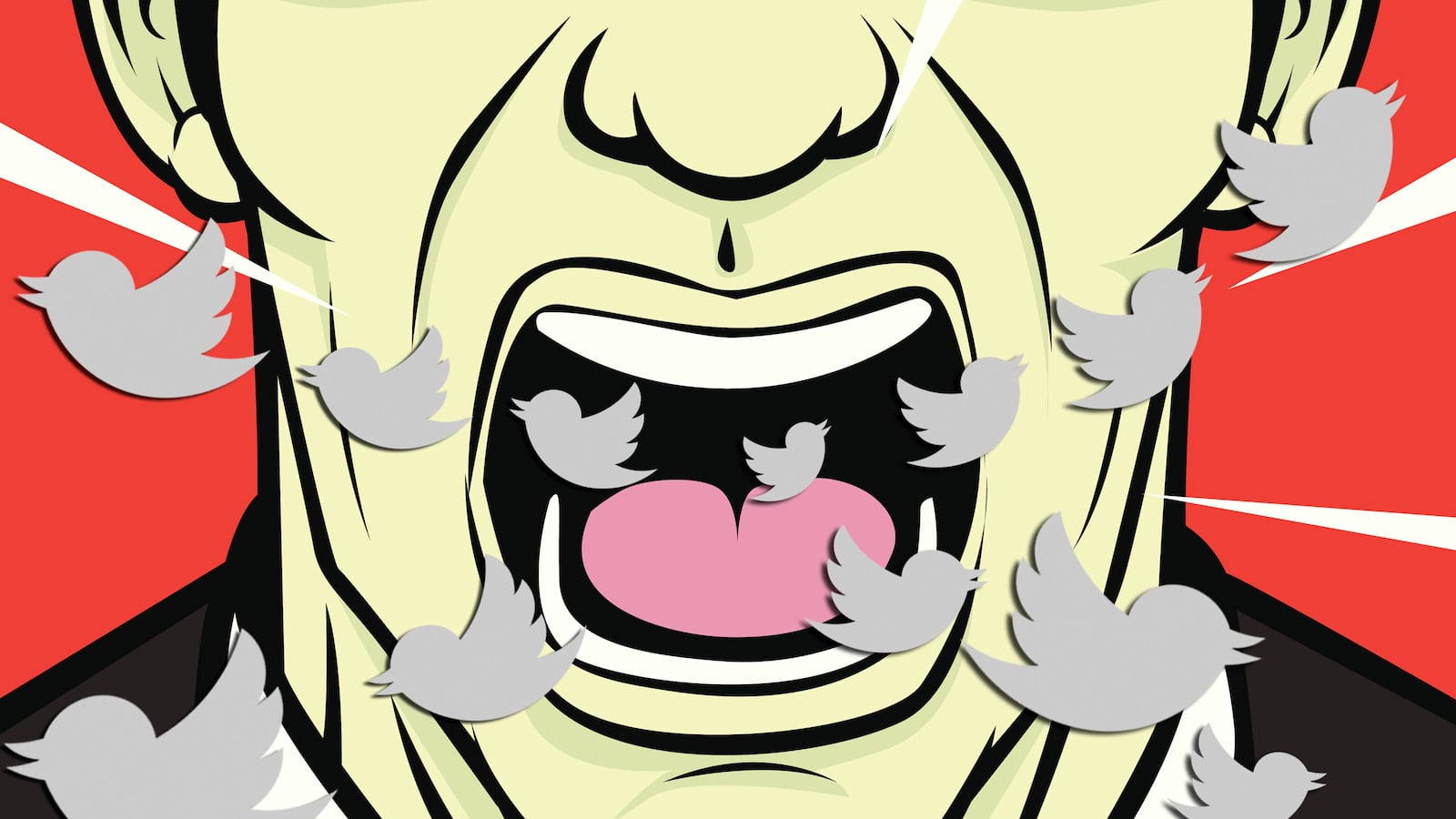Someone’s finally doing something about Twitter’s gendered harassment problem. There’s just one problem: it isn’t Twitter. Yesterday, Women, Action & the Media (WAM!), a nonprofit group that addresses gender issues in the media, announced that they have partnered with Twitter to “cut down on the harassment of women” on the social media platform.
WAM! invites women who use Twitter to report harassment on their own form, which has been tailored to suit the sort of harassment that women most often face online and to address the inadequacies of Twitter’s own reporting system. Twitter’s harassment form, for example, only asks whether the harassing user in question is making violent threats, posting spam, exposing private information, or engaging in the unspecified category of “harassment.” WAM!’s form, by contrast, contains seven specific categories of harassment including: threats of violence, doxxing, posting false information, hate speech, and revenge porn.
Crucially, WAM!’s form also allows women to indicate whether they are being harassed by a single person or by multiple people, a degree of flexibility better suited to the way in which women are often harassed online and one that Twitter’s own reporting system does not allow. For women who are attacked en masse, this new reporting system will save substantial time and energy. When feminist author Jessica Valenti asked Twitter this summer if anyone knew of a country in which tampons were subsidized, for example, hundreds of users sent her abusive messages. Under Twitter’s system, Valenti would have had to individually file a report against each user—a draining, time-consuming process that women in the midst of sustained harassment campaigns often lack the stamina to complete. With WAM!, on the other hand, Valenti could have composed a single report describing the nature of the harassment while simply providing an example of a harassing tweet.
If it sounds like WAM! is doing all the heavy lifting in this partnership, that’s because it is. In a phone interview, Jaclyn Friedman, the Executive Director of WAM!, told me that Women, Action, & the Media will act as an “authorized reporter, an organization that gets vetted and which represents a group that that often gets targeted on Twitter.” Under this system, WAM! escalates the reports they receive to Twitter, collecting detailed data about Twitter’s responses to those reports. Once the program is out of its pilot stage, WAM! promises sit down with Twitter in order to “improve their responses” to gendered harassment.
If there’s any doubt that gendered harassment on Twitter is a problem serious enough to warrant this third-party intervention, a Pew Research Center report from last month indicates that young women are disproportionately subjected to the most severe types of Internet harassment including stalking and sexual harassment. Pew’s data dispels an earlier report from the think tank Demos, that is sometimes cited to indicate that men receive more harassment online than women. Where the Demos report analyzed tweets sent to less than a hundred British celebrities and public figures, Pew surveyed nearly 3,000 adult Internet users in the U.S. Particularly alarming among Pew’s findings are the facts that a quarter of young women have been sexually harassed online and that over a quarter have been stalked.
But if gendered Internet harassment is this urgent of a problem, why is Twitter outsourcing it to WAM! instead of addressing it in-house? With Twitter’s second quarter revenues clocking in at an impressive $312 million, it would seem the social media service could afford to expand their reporting form, and even hire more staff to address the hateful messages that are so often exchanged on their service. Instead, as Valleywag reports, Twitter is currently spending over $10 million to construct new offices across the street from their current building, even investigating the possibility of building a skybridge between the two buildings. Twitter told Bloomberg that the expense of the skybridge would be justified by the “five minutes per employee” that it would take to “go down an elevator, out of one building, into the other, and up the elevator to the right floor.” There’s nothing like an extravagant and unnecessary construction project to communicate to women that their wellbeing is worth less than the inconvenience of a five-minute elevator ride.
In our interview, Jaclyn Friedman openly expressed her opinion that Twitter should be handling this problem themselves instead of turning to WAM!.
“I’ll speak frankly,” she said. “I think it’s really unjust that they need our free labor for this. Twitter is making a lot of money and they should be putting the resources into this. We should not have to do this project and I don’t think it would be a shock for Twitter to hear me say that.”
Even the reporting form that WAM! is implementing was, according to their press release, “created pro-bono by an experienced developer concerned about [the] increasing harassment of women online.” Twitter, it seems, will reap all of the potential benefits of this partnership by relying on free labor instead of diverting their own resources to address the problem to this degree of specificity.
In an ideal world, Twitter should be expected to address its harassment problem head on. As tech culture critic Shanley Kane wrote for Model View Culture, “Twitter is a multi-billion dollar company with a massive engineering team, and Twitter’s response to online abuse should embody its position and resources.” Kane also nods to Twitter’s diversity figures, which show that only 30 percent of Twitter employees are female, in order to ask: “Why isn’t Twitter hiring full-time talent from marginalized and underrepresented communities to address these issues, instead of putting up a Wufoo form someone created for free?”
Twitter’s continued inaction on gendered harassment is especially frustrating because it isn’t exactly an unknown problem for their executives. As Amanda Hess reports for Slate, when Twitter CEO Dick Costolo fielded questions from users for CNBC’s Closing Bell, he completely sidestepped questions about harassment and abuse even though they constituted 28 percent of the questions he received. It took the high-profile exit of Zelda Williams from the service for Twitter vice president of trust and safety Del Harvey to promise an improved response to some forms of harassment. The tangible effects of that promise, however, have yet to be felt by many women on Twitter who continue to rely on independently-created collaborative blocking tools to filter out the most abusive users.
Although WAM! would clearly prefer Twitter to clean up after itself, they seem eager—“glad,” even according to their press release—to fix the problem by whatever means necessary.
“We only have so much control over what Twitter does and we can control what we do,” Friedman said. “We’ve decided that this is urgent enough and important enough that we’re going to overlook the fact that they should be handling it themselves.”
WAM!’s announcement yesterday will be seen as a signal of hope to those beleaguered female Twitter users who regularly find themselves on the receiving end of vitriolic messages. But the nature of WAM!’s partnership with Twitter brings the social media service’s reluctance to correct its own flaws into sharp relief. It’s hard not to see this as the high-tech equivalent of a weary mother cleaning her child’s filthy room after repeatedly asking him to do it himself. Indeed, Twitter’s reliance on WAM! is little more than the virtual continuation of a long tradition of devaluing women’s labor, labor that is so often necessary to maintain the habitability of the spaces in which we live, work, and, yes, even tweet.
WAM!’s project may prove to be a decisive moment in the history of combatting gendered Internet harassment but Twitter should remember it, shamefully, as the moment when they used the labor of those most affected by their service’s shortcomings to fix their own problems.





